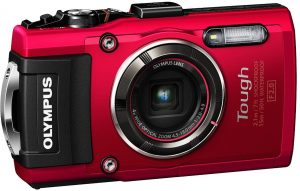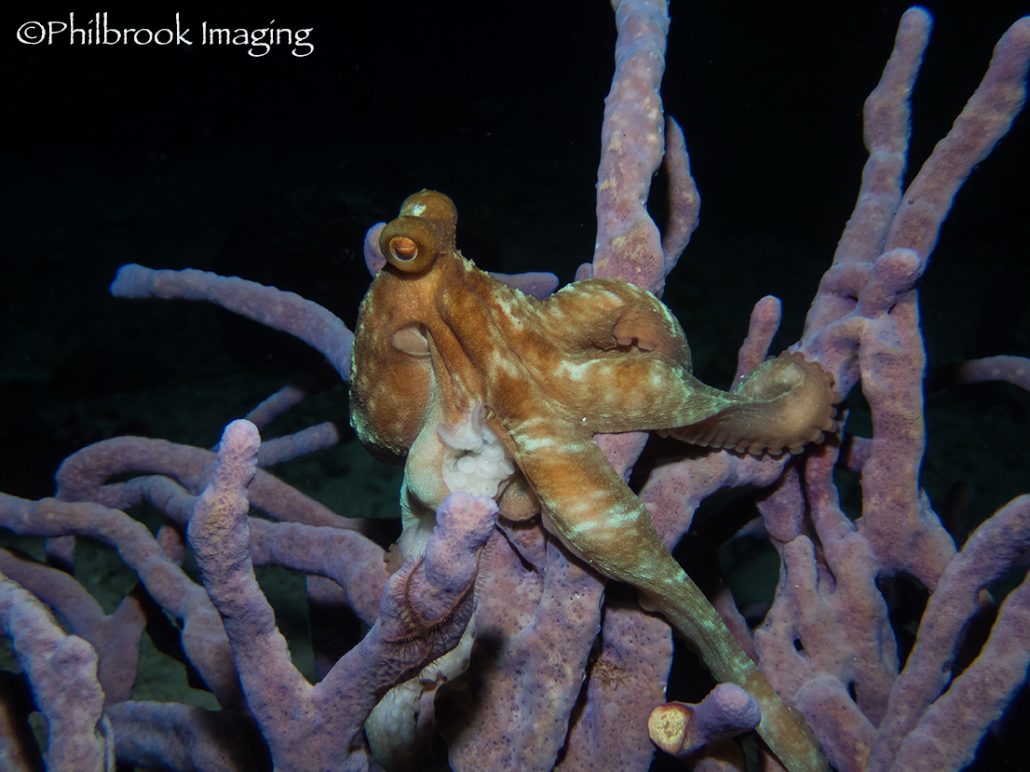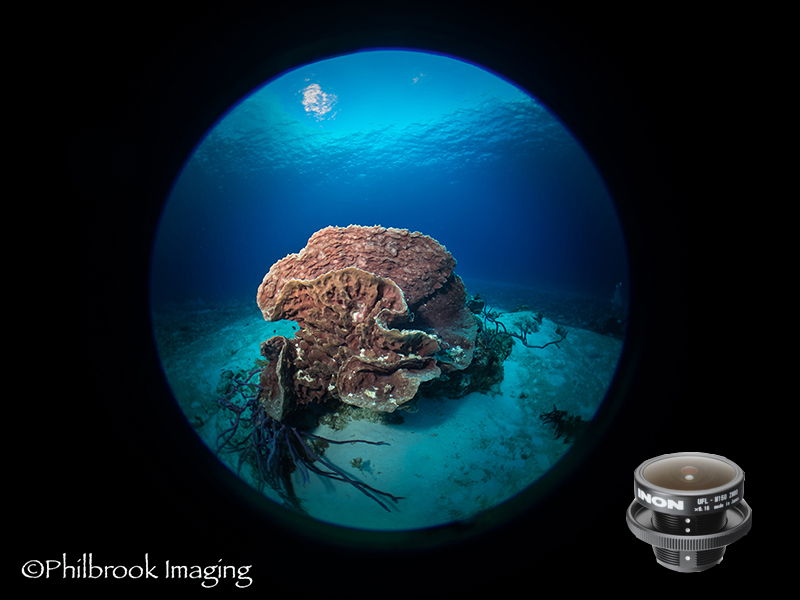Olympus TG-4 Review
There has been a lot of buzz about the Olympus TG-4 as a great choice for underwater photography. I decided to put it to the test while in Cozumel recently to see if it lives up to the hype!
There is a sea of excellent cameras on the market right now, however, for us to consider a point-n-shoot digital camera to be a great choice for underwater photography, it needs to meet certain criteria beyond being able to take good images. Here’s our nonnegotiable list of requirements in which the TG-4 meets perfectly:
- It sounds basic, but there needs to be a housing made for it! Not all cameras can be housed.
- The camera needs to be compatible with wet mount conversion lenses.
- The camera needs to be able to shoot RAW files.
- The camera needs to be able to execute a custom white balance.
- The camera must be able to shoot 1080p or 4K HD video.
- The camera needs to posses other shooting modes besides AUTO. For example: Program, Aperture Priority, Shutter Priority, Manual. These modes will allow the shooter to take some control over the camera.
An added benefit to the Olympus TG-4 is its durability and versatility. Even without an underwater housing, it is a waterproof camera! Unhoused, it can be taken snorkeling or diving to depths up to 50′. When the TG-4 is housed, it can be taken to all recreational scuba diving depths and beyond. In addition, the TG-4 is shock proof, crush proof, dust proof, and freeze proof – making it a rugged camera for any vacation or weather!
Performance
The TG-4 is very user friendly and quite intuitive. After spending about 15 minutes with the camera, I was able to quickly identify all the features and functions I deem important for underwater photography. Easy access to these features is extremely beneficial underwater! The battery life is very impressive allowing 380 shots on a charge. I do not take anywhere near that many images on a single dive, so I could easily get two plus dives out of a charge while leaving the camera on the entire dive. The camera’s autofocus is ideally fast and performs exceptionally well in low light with a F/2.0 master lens.
Shooting Stills
The TG-4 is a 16 megapixel camera. Besides jpegs, the TG-4 also shoots RAW files which is advantageous for post editing. Take note that the camera only uses a 1/2.3″ sensor, so it will not compare with DSLR cameras. However, no small sensor point-n-shoot camera will compete with a DSLRs larger sensor. With that said, the image quality is impressive! Sharp with plenty of detail!

OLYMPUS TG-4 w/ INON S-2000 strobe
Another big asset to the TG-4 is it’s “Microscope” mode. This mode allows you to photograph and video subjects that are absurdly close to the lens! Minimum focus is an amazing 1cm! When shooting in this mode, the flash is disabled so strobes will not be compatible; however, a well placed video light works just fine for both stills and videos.

OLYMPUS TG-4 in Microscope mode w/ FIX Neo Mini 1000 lumen video light
Although the TG-4 does not have a Manual mode, it does offer AUTO, Program, Aperture Priority, and two Custom modes. Program and Aperture Priority are very useful underwater – especially with adjustable exposure compensation. Using Aperture Priority and adjusting the exposure compensation made shooting sunball shots a breeze! Albeit, for fast action shooting it would be nice to have full manual or Shutter Priority mode so you could select a faster shutter speed in order to stop motion. As a work around, this can somewhat be accomplished by selecting Underwater Landscape mode. In this mode the camera’s shutter speed often defaults to 1/60 as opposed to 1/30 but being able to select a shutter speed of 1/125 would be ideal.
The TG-4’s custom white balance is very accurate, easy to set, and vital for taking quality ambient light video. The camera’s custom white balance is conveniently “one touch”, which makes white balancing simple when changing depths during a multi-level dive. The camera also allows you to store two custom white balance settings. This is beneficial as well. It allowed me to store one white balance setting at 25′ and another at 45′. This is convenient for switching between the two settings when changing depth. The TG-4 also has an Underwater white balance mode. This setting worked well for depths within 20′.
Wet Mount Lens Options
The TG-4’s inherent lens is fairly wide – 25mm at its widest zoom. It’s great for shooting fish portraits as well as shooting subjects as large as sharks and turtles. However, if you desire to shoot scenics, shipwrecks, whale sharks, etc., a wide angle conversion lens is necessary. TG-4 compatible wide angle wet mount conversion lenses are available from FIX, INON, Olympus, and Nauticam. Olympus has the FCON-T01 fisheye conversion ($139.95) lens that attaches directly to the TG-4 for snorkelers. For Scuba divers, I found the FIX UWL-28M52 ($399) to be the best option for the money. This lens let’s you execute 165 degree wide angle images and is sharp corner to corner. Another great lens is INON’s UFL-M150 ZM80 Micro Fisheye Lens ($220 + $48 for M52-M67 adapter). This lens allows you to shoot creative and unique perspectives from circular fisheye images to wide angle macro images. It’s a blast to use!

OLYMPUS TG-4 w/FIX UWL-28M52 wide angle lens

OLYMPUS TG-4 w/INON UFL-M150 ZM80 Micro Fisheye Lens

OLYMPUS TG-4 w/INON UFL-M150 ZM80 Micro Fisheye Lens
Video
Video mode is delightfully easy to use. It’s format is 1080/30p HD video and basically point-n-shoot; however, the TG-4 will keep the exposure compensation value and the custom white balance that was set in Program or Aperture Priority mode. This is an advantage as it helps to avoid blowing out highlights and allows deep colors to come through without requiring an underwater filter.
The video below has three sections of clips to show the perspective captured with the TG-4’s standard lens with custom white balance, a wide angle lens with custom white balance, and standard lens with a small video light. The video clips coloring is un-edited and straight from the TG-4.
Housings
As previously mentioned, the TG-4 is waterproof to 50′. This is great for snorkelers; however, divers will want to house this camera. Ikelite, Nauticam, and Olympus all make great housings for the TG-4. I was able to shoot the TG-4 in both the Ikelite & Olympus housing while on the trip. Both performed well, were easy to use, and allowed use of the wet mount lenses. Although I did not test the Nauticam housing on my trip, all three housings have optical ports on them so all are compatible with INON and Sea & Sea digital TTL strobes. I found myself favoring the Ikelite housing a little more than the Olympus. It’s more robust, has a 67mm threaded port, 200′ depth rating, and it is easier to service when the time comes. Both housings retail at $299. If a more rugged housing and greater depth rating is desired, the Nauticam is the best choice. However, keep in mind, the Nauticam is aluminum, as opposed to polycarbonate, and comes with a much higher price tag of $800.

Olympus, Ikelite, and Nauticam housings for Olympus TG-4
Accessories
The TG-4 camera allows the essentials that an underwater camera needs: the ability to use wet mount conversion lenses and S-TTL or DS-TTL strobes from INON and Sea & Sea. These accessories provide the photographer with all the tools needed to get magazine-quality images and eye popping video.
Summary
After spending a week with the TG-4, I was very impressed with how well the camera performed! The camera was easy to use, intuitive, and versatile. Image quality is sharp, auto focus is fast, custom white balance is accurate, Microscope mode is amazing, and the battery life is impressive! If your in the market for a great all-around camera that won’t break the bank, the Olympus TG-4 – at only $379 – is a great choice!
Pros
- Olympus TG-4 camera ($379) with housing ($679)
- Fast auto focus
- Industry leading macro in “Microscope” mode
- Long battery life
- Compatible with a variety of wet mount conversion lenses
- Shoots RAW files
- Compatible with optical strobes for INON STTL and Sea & Sea DS-TTL
Cons
- No Manual or Shutter Priority modes
- No control over shutter speed
Recommended Accessories
- Strobes
- Sea & Sea YS-03 strobe (good)
- INON S-2000 strobe (better)
- INON Z-240 or Sea & Sea YS-D2 (best)
- Wet Mount Lenses
- FIX UWL-28M52 wide angle lens
- INON UFL-M150 ZM80 Micro Fisheye Lens
- Video Lights
- Sealife Mini 600 (good)
- INON LF100-W (better)
- FIX NEO 3000 DX II (best)



